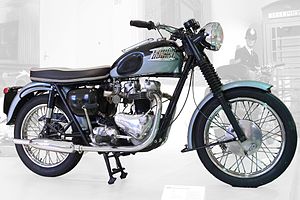Triumph Engineering Co Ltd was a British motorcycle manufacturing company, based originally in Coventry and then in Meriden. A new company, Triumph Motorcycles Ltd, based in Hinckley, gained the name rights after the end of the company in the 1980s and is now one of the world's major motorcycle manufacturers.

The Triumph Thunderbird is a British motorcycle that was introduced by Triumph in 1949 and produced in many forms until 1966. The name was used three more times for new and distinct Triumph models.

Triton motorcycles were hybrid motor cycles built from the 1950s to the 1970s that involved fitting Triumph engines into Norton frames. Because no factory offered Triton motorcycles, they were typically privately built. However, some UK dealers offered complete bikes. The aim was to combine the best elements of each marque and thus gain a bike superior to either. The name 'Triton' is a contraction of Triumph and Norton; 'Triton' was the name of an ancient Greek god.

Edward Turner was an English motorcycle designer. He was born in Camberwell in the London Borough of Southwark, on the day King Edward VII was proclaimed King. In 1915, Turner had his first ride on a motorcycle, a Light Tourist New Imperial.
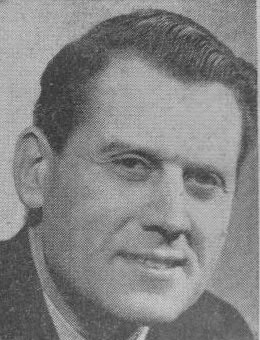
Douglas Lionel Hele was a pioneering British motorcycle engineer with Triumph and other firms: BSA, Douglas and Norton. He was born in Birmingham in 1919 and died in Hagley, Worcestershire on 2 November 2001.

The T140W TSS was the last motorcycle model made by Triumph Engineering at their Meriden factory.

The Triumph Thruxton is a series of British motorcycles with parallel-twin engines and sports styling. The name Thruxton was first applied to a handbuilt machine for endurance racing in the mid 1960s, and later revived in the 2000s.

Triumph Motorcycles Ltd is the largest UK-owned motorcycle manufacturer, established in 1983 by John Bloor after the original company Triumph Engineering went into receivership. The new company, initially called Bonneville Coventry Ltd, continued Triumph's lineage of motorcycle production since 1902. They have major manufacturing facilities in Thailand.
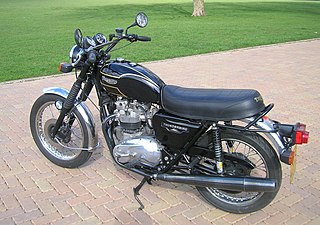
The Triumph TR65 Thunderbird is a motorcycle made by the Triumph worker's co-operative at the Meriden factory from 1981 to 1983. The TR65 was a reintroduction of the Triumph Thunderbird model name first used on the original 6T Thunderbird of 1949. A short stroke model, the Daytona 600 was designed in 1983 but not produced.

The Triumph TSX was a British motorcycle credited by the factory as being designed in 1981–1982 by Wayne Moulton, president of Triumph Motorcycles America(TMA), the factory's American arm. This is the only instance of Triumph's signature twin cylinder models being designed by an American.

The Bonneville T100 is a motorcycle designed and built by Triumph Motorcycles Ltd in Hinckley, Leicestershire, UK.
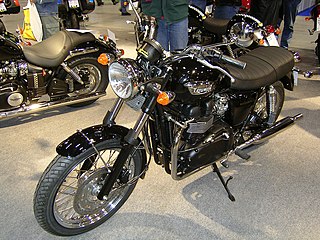
The Triumph Bonneville 790 cc is a British motorcycle that was designed and built in Hinckley, Leicestershire by Triumph Motorcycles Ltd between 2001 and 2007, when the engine size was increased to 865 cc.
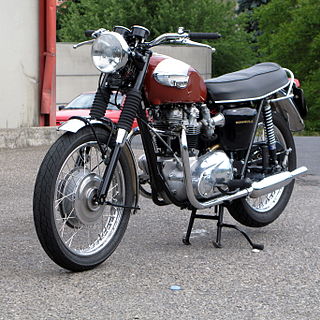
The Triumph Bonneville T120 is a motorcycle originally made by Triumph Engineering from 1959 to 1975. It was the first model of the Bonneville series, which was continued by Triumph Motorcycles Ltd. The T120 was discontinued in favour of the larger 750 cc T140 in the early 1970s.

The TR6 Trophy is a motorcycle that was made by Triumph, in Meriden, from 1956 to 1973, when it was replaced by the five-speed 750-cc Triumph Tiger TR7V. During this time, it was a successful model, particularly in the US. The competition variant, popularly known as the "desert sled", won numerous competitions throughout the late 1950s and 1960s. Steve McQueen's fondness for the model is well known, as is his participation in the 1964 ISDT on a TR6 Trophy.
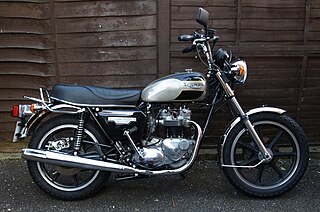
The Triumph Bonneville T140 is a standard motorcycle with a 750 cc (46 cu in) capacity engine that was designed and built by Triumph Engineering at Meriden near Coventry.
Brian Jones was a motorcycle designer and engineer born in Gloucester, United Kingdom in 1928. Notable for his contribution to the original design of the Triumph Bonneville, he died in Coventry, on 4 March 2001.

The Triumph Twenty One is a standard motorcycle made by Triumph Engineering Co Ltd in Coventry. The Model Twenty One was the first of the Triumph unit construction twin cylinder motorcycles. Rebranded as the Triumph 3TA in 1959 it continued in production until 1966 when it was survived by the Triumph T90, its sports version.

The Speedmaster is a Triumph cruiser motorcycle designed and built in Hinckley, Leicestershire. Launched in 2002 with a 790 cc (48 cu in) twin-cylinder engine, the displacement was increased to 865 cc (52.8 cu in) in 2005, upgraded to fuel injection in 2008, and in 2018 the displacement was increased to 1,200 cc (73 cu in).

The Triumph Scrambler is a British motorcycle made by Triumph Motorcycles. Launched in 2006, it was the last Triumph styled by designer John Mockett, who had begun working with the small factory team at Triumph in 1989, rationalising existing models based on a very successful modular design plan, including the concept and styling of the unfaired Trident triples for their 1990 IFMA launch. Mockett subsequently served as principal stylist for most of the bikes introduced up to 2006.

Bridgestone motorcycles were a division of the Bridgestone Tire Co. of Kyōbashi, Tokyo, Japan that produced mopeds and motorcycles from 1952 to 1970. Initially producing power assisted bicycles, the division moved on to producing mopeds and then motorcycles. The motorcycles were technologically advanced and powered by two-stroke engines. The high technical specification resulted in the machines being more expensive compared to other manufacturers models. Production was stopped in 1970 to protect the supply of tyres to other manufacturers.
